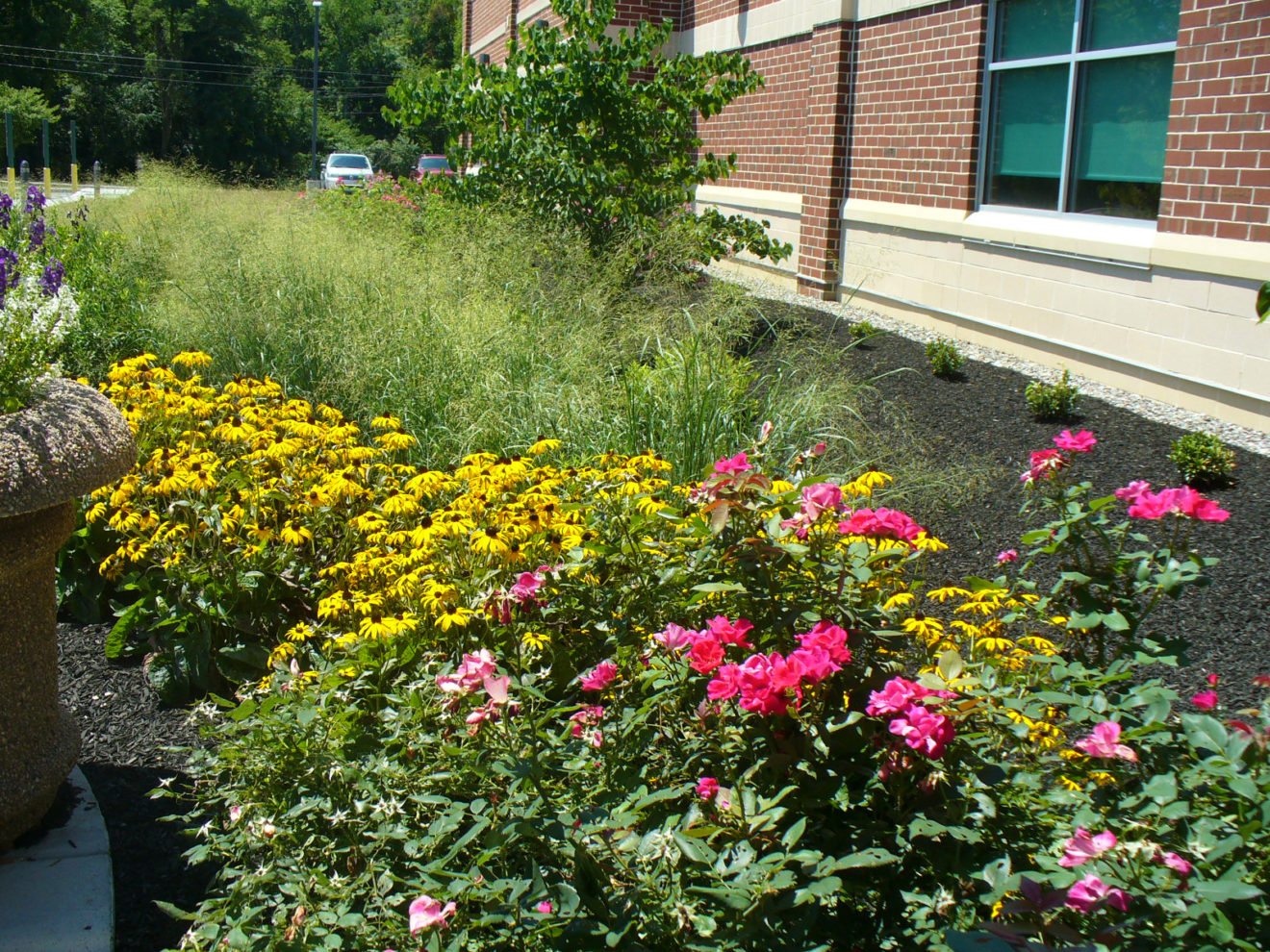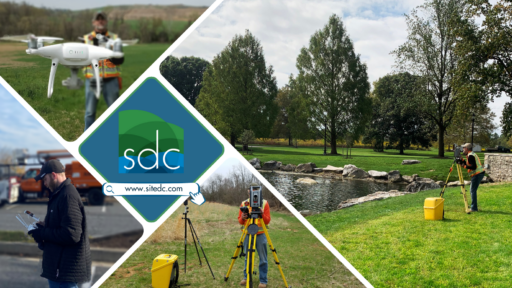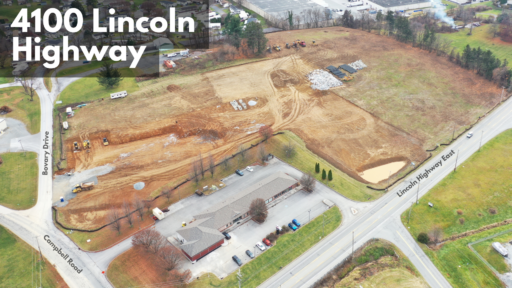Posted
Categories
Learning
This is the third article in a series that will detail the importance of rain gardens, as well as how to maximize rain garden performance on your site including site preparation, installation, plant selection, signs of a healthy rain garden, and maintenance.
Rain gardens have become a hot topic in landscaping recently. They are known for their beauty meets function approach to landscape design. Generally filled with a rich selection of plants, these gardens are not only aesthetically pleasing, but also serve a multitude of purposes. A properly planned, installed, and maintained rain garden will be a planted depression that allows rainwater runoff from nearby impervious areas the opportunity to be absorbed. These gardens provide benefits such as:
- Filtration of runoff pollution
- Reduction of flooding and water damage
- Improvement of water quality
- Recharging of local groundwater
- Increase in curb appeal
It is estimated that rain gardens can cut down pollution by up to 30%, while also providing a natural solution to stormwater management issues.
Now that we have discussed important considerations for preparation and installation for you rain garden, we will turn our attention to maintaining your rain garden so it can continue to function at top performance. Rain garden maintenance can be separated into two main categories — inspection and plant care.
Regular inspections are critical to your rain garden’s performance. You should schedule inspections prior to and after each growing season (generally in April and the end of October) and also after any large storm event to evaluate performance.
During these inspections you should look for:
- Weeds and invasive species that may have made their way into your rain garden. While it may seem counterproductive to remove these plants, it is very important to your garden’s health. Invasive species and weeds can overtake the other plants in your garden and destroy the ecology you had planned for your garden.
- Plant health indicators. General guidelines for plant health include looking at the size, color, and look of each plant. For example, plants should generally be short and stocky, have fully green, shiny leaves, and be fully erect. If your plant is showing signs of less than optimal health, more in depth maintenance may be necessary.
- Excessive sediment that may be built up in your garden. This may include trash, fallen leaves, or branches. It is important to remove the sediment so the rain garden can function properly, as designed.
- Water movement within the garden. Standing water in Zone One or the “Wet Zone” of your garden is absolutely normal for up to 24 hours after a storm event. However, if standing water is seen in other zones or for an extended period of time, your rain garden is not functioning properly. If it cannot be easily fixed by basic maintenance, it is best to contact a professional.
In addition to regular inspections, your rain garden will require basic plant care to ensure your rain garden’s inhabitants are healthy and thriving. This includes the following care:
- Watering: Rain gardens generally require one year of watering until established
- Mulching: You will be required to mulch twice yearly until groundcover is established
- Weeding: As mentioned above, weeding is incredibly important to rain garden performance. You will need to weed frequently and watch for invasive species such as Wisteria, Japanese knotweed, thistle, and wild cucumber
- Pruning: Deadheading/seasonal pruning will be required, along with cutting back of broken or discolored branches, and dead flower head removal.
- Thinning: Pruning branches back to the main stem to thin the plant out will be beneficial to plant health.
- Heading: Heading removes only part of the branch, this helps to produce a more dense shrub with more branches, which makes for a healthier plant.
- Mowing: If your rain garden includes a seeded meadow grass area or dense grasses, mowing will be required. You will also need to remove stems and seed heads after the growing season. Keep grasses cut back to 6”-8” using a mower or weed wacker. Ensure grass is mowed at least twice a season to maintain performance.
- Replanting: Replant dead or diseased plant material. Reseed any sparse berms. Also, evaluate weather/environmental conditions where plant material was failing to create a long term solution.
- Sediment Removal: Monitor your rain garden for sediment accumulation and remove undesired sediment with a flat shovel, as needed.
Rain gardens, while fairly easy to maintain, do require a bit of basic maintenance to ensure they are performing optimally. Follow the guidelines laid out in this article to keep your rain garden healthy and performing well!





Share